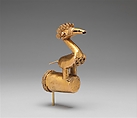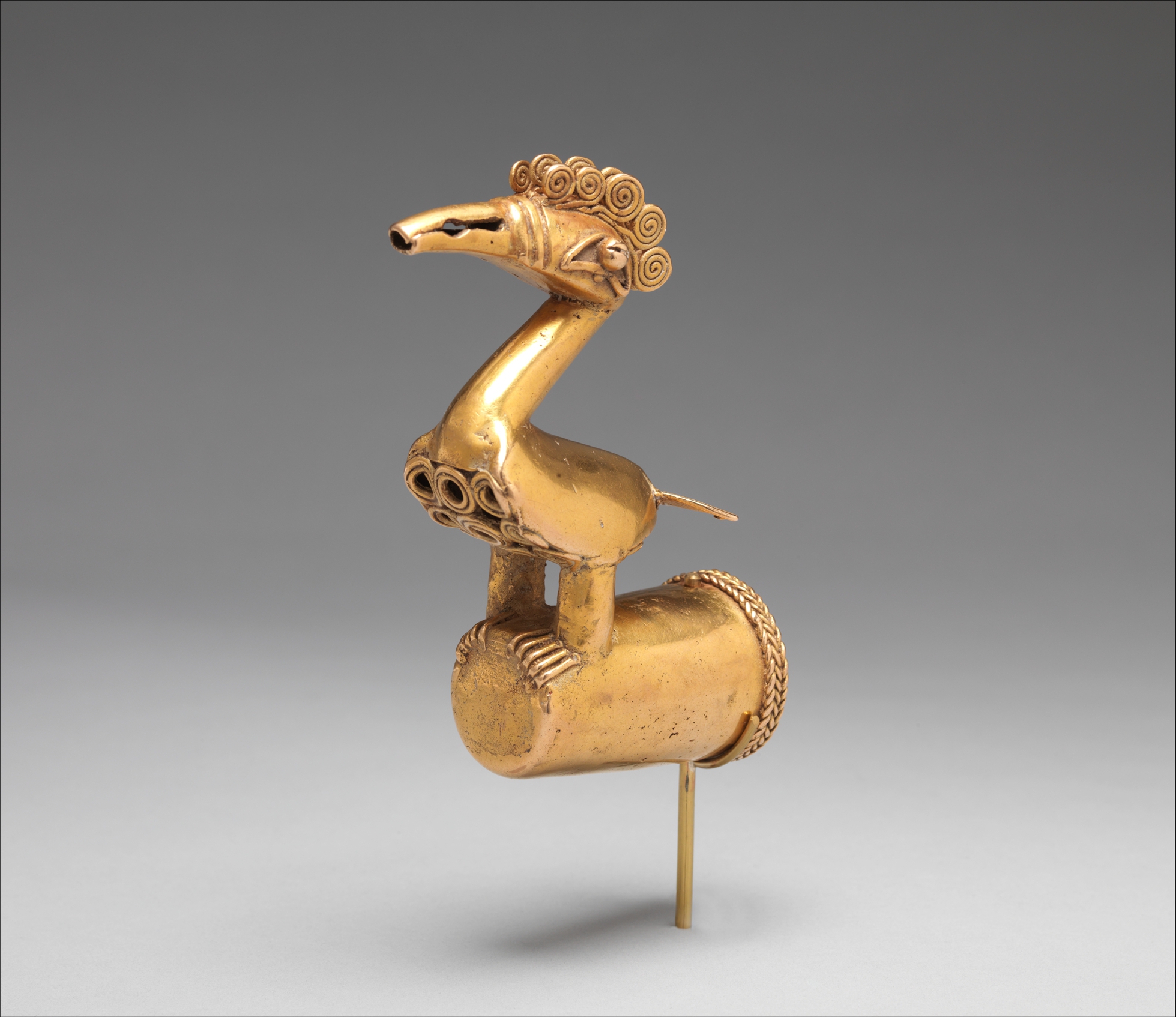Bird Staff Head
Not on view
Most of the gold objects that survive today from Precolumbian America are wearable ornaments such as pectorals, necklaces, headdresses, and ear and nose ornaments, which display great diversity in style and iconography. Among unusual forms are finials thought to have adorned staffs of rank or office. They were made by the Zenú people of the Caribbean lowlands in northwestern Colombia and have thimble-shaped caps topped with three-dimensional figures of birds, animals, or humans. Cast by the lost-wax process of the gold-copper alloy <em>tumbaga</em>, the small sculptures are often ornate and detailed, as is this bird with its openwork false-filigree chest and head crest.
After a hiatus for World War II, interest in the peoples and civilizations of ancient America revived in certain art museums when attention turned to Precolumbian art. Such a museum was the Cleveland Museum of Art, where an exhibit titled <em>Art of the Americas</em> opened in 1945. An illustrated publication relating to the exhibition, <em>Picture Book, Number Two</em>, featured this upright gold bird of show-off demeanor on the cover. Long-beaked, with a great curly crest, it sits atop a gold finial that belonged at the time to New York antiquity dealer John Wise. It became part of the Rockefeller collection in 1949, and was shown in 1953 in <em>Primitive Sculpture from the Collection of Nelson A. Rockefeller</em> at New York's Century Association, the first exhibition to be drawn from the collection.
Due to rights restrictions, this image cannot be enlarged, viewed at full screen, or downloaded.
This artwork is meant to be viewed from right to left. Scroll left to view more.



